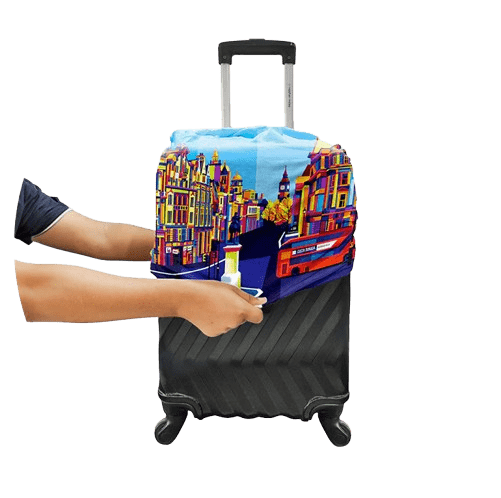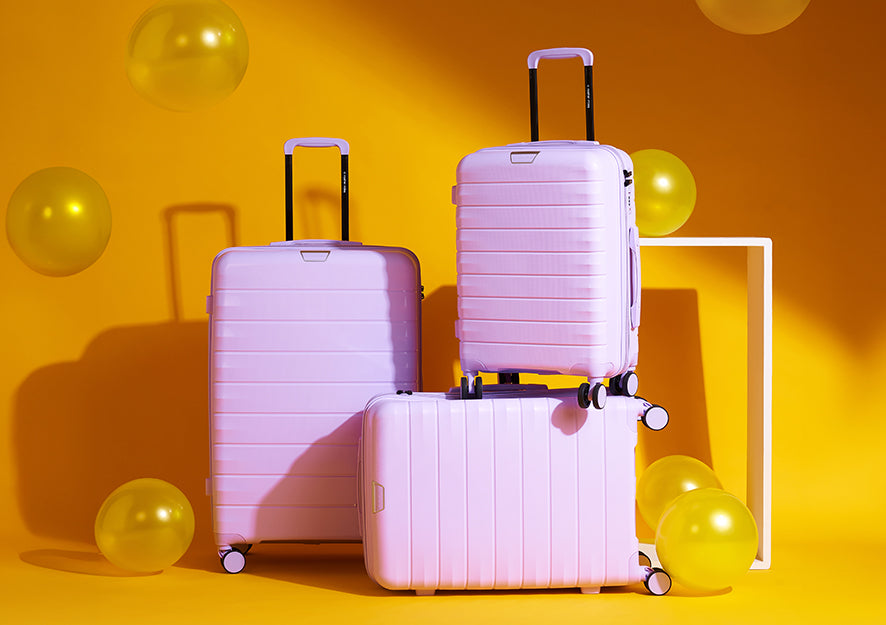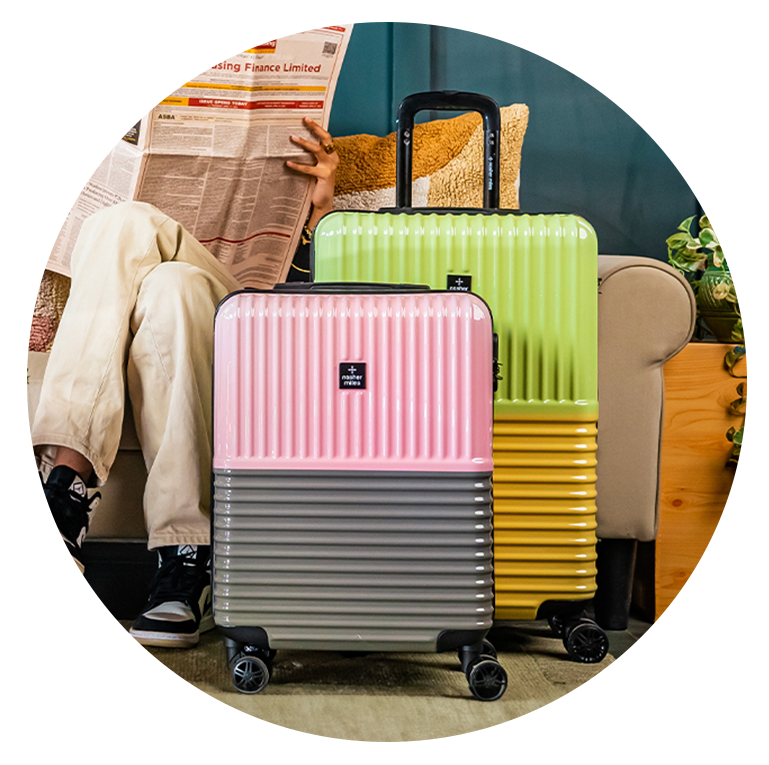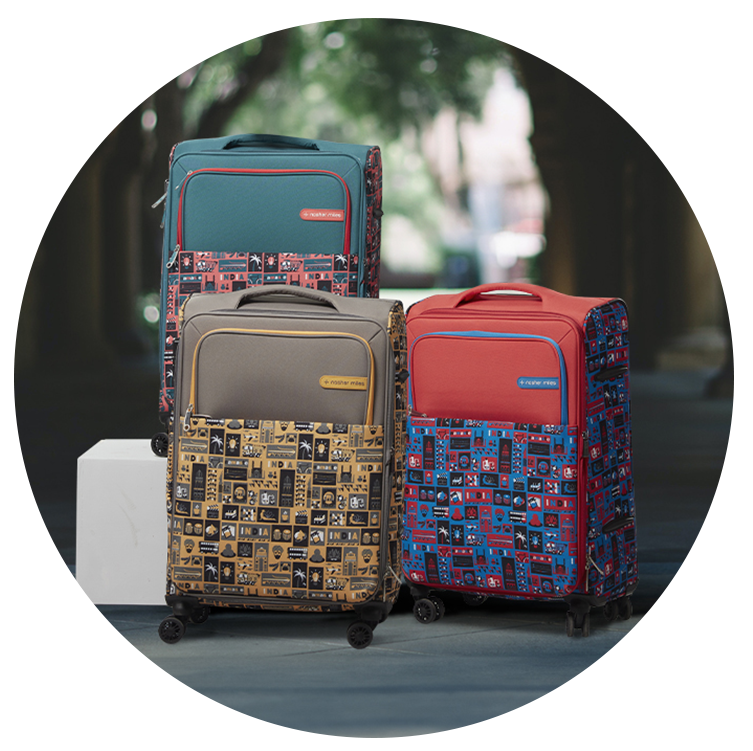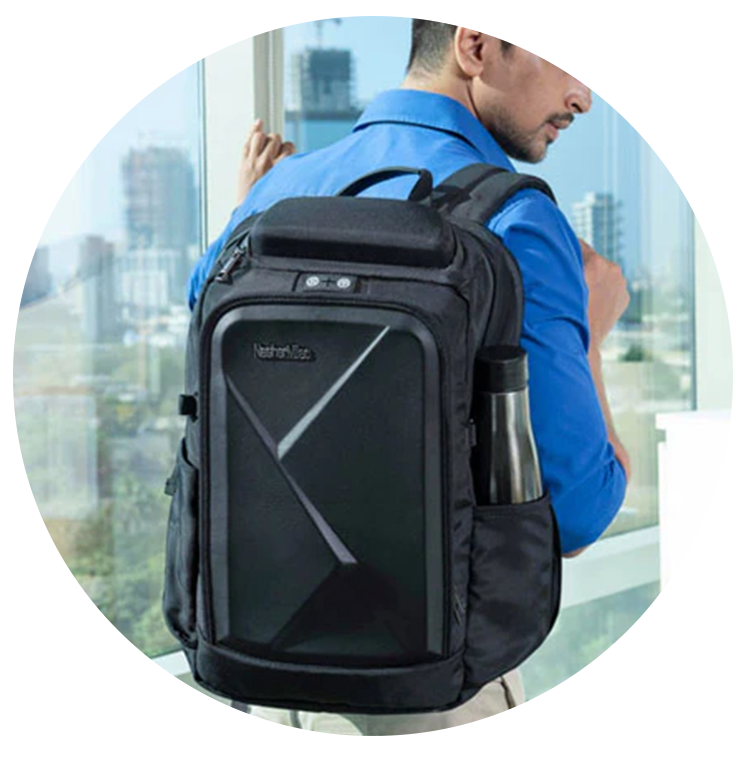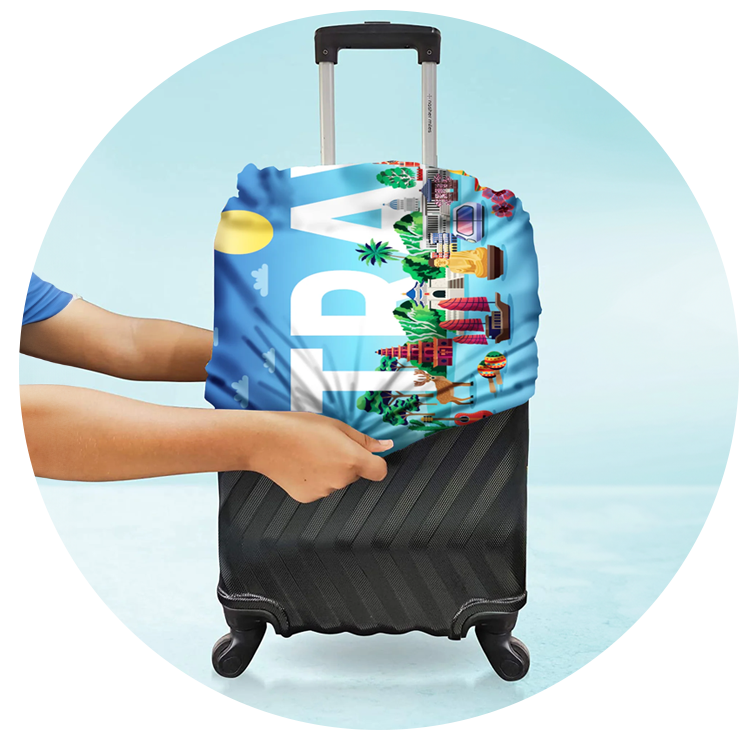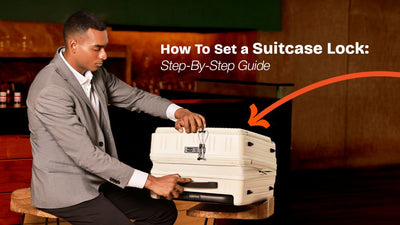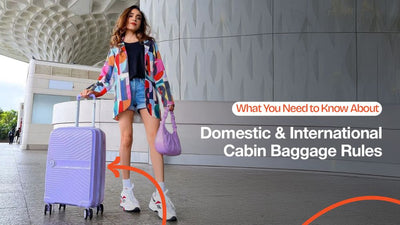What is a TSA Lock? Is it Important for Luggage Security?
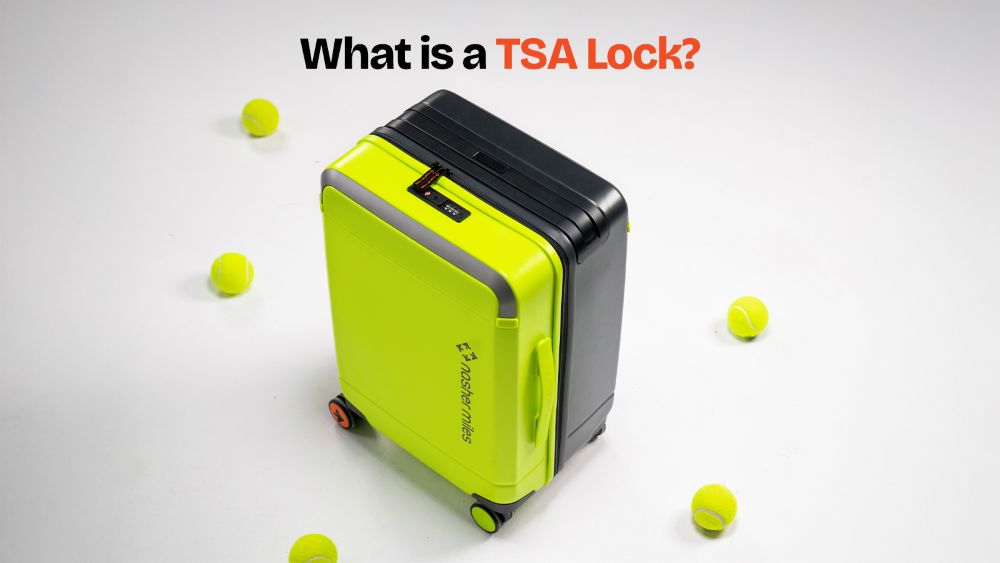
Travelling is an exciting experience everyone should have. The cities you go to, the culture you explore, and the people you meet leave a permanent mark on your soul. Adventure is the best teacher there is. It teaches us more about life than in any classroom. But, this liberating experience can take a dark turn if your luggage is not secured. Whether travelling in business class or economy, securing your luggage against theft and tampering is of utmost importance.
When someone says ‘secure your luggage’, the first thing that comes to mind is the heavy locks with chains, right? However, the good news is that securing your luggage is now easy and no longer requires heavy chains and a strong lock. This is where the TSA locks come in.
This blog will help you understand what TSA locks are, the types of TSA locks and the best ways to use them.
TSA Lock Meaning and Full Form Explained
TSA lock means security! It is a specially designed lock that allows TSA agents to inspect the luggage without damaging either the luggage or the lock itself. These locks feature a universal keyhole that allows TSA agents to open and reseal your luggage during security checks.
The full form of TSA lock is Transportation Security Administration lock, specifically designed to keep your luggage safe and tamper-free. This lock gets its name from its agency, TSA LOCK®, a global security system that allows passengers to secure their luggage while permitting security authorities to inspect it simultaneously without damaging it.
How Does a TSA Lock Work?
The TSA locks act as a lifesaver when it comes to securing your belongings. However, it’s important to know that it’s working. These locks have a universal master key, accessible only to the TSA agents who use it to inspect and relock your luggage. They typically have a combination or a key that you can set yourself. They also have a secondary keyhole that allows the TSA agents to access the lock with the master key.
Types of TSA Locks Available
The TSA locks come in various types, including TSA combination locks, TSA key locks, TSA cable locks and TSA smart locks. Let us know about different types of TSA locks
1. TSA Cable Locks
TSA cable locks, as the name suggests, feature a flexible cable that can be used to secure multiple compartments or items within the suitcase or cabin trolley bag. They are often used in conjunction with other types of locks for an added security layer.
2. TSA Key Locks
TSA key locks use a traditional key to open and close the lock and are generally more affordable than combination locks. However, TSA key locks are more prone to being stolen or lost, which is a considerable concern.
3. TSA Combination Locks
These locks require a special three or four-digit combination to open and are a popular choice among travellers for their convenience and security. They often have a built-in feature that allows the TSA agents to open them using the master key.
4. TSA Smart Locks
TSA smart locks use a combination of technology, such as Bluetooth or smartphone connectivity, and enable users to lock and unlock their suitcases remotely. These locks offer convenience and ease of use, allowing users to track their luggage and monitor the lock’s condition.
Some smart locks also offer biometric authentication features, such as fingerprint scanning.
Why TSA Locks Are Important for Luggage Security
TSA locks are important for luggage security, as they enable TSA agents to inspect the luggage without having to open it. This prevents damage and tampering with your luggage (e.g., carry-on bag, hard case trolley bag, etc). They are designed to deter thieves and unauthorised access to your belongings.
TSA Locks vs. Regular Locks: Key Differences
-
Damage Prevention: TSA locks can be opened by TSA agents to inspect your luggage without damaging your suitcase. Whereas, the regular traditional lock has to be cut in order to inspect the luggage, which might damage your suitcase.
-
Hassle-free Travel: TSA locks give you the privilege to travel hassle-free without having to stop in queues to get your luggage inspected by waiting for TSA agents to cut the regular lock.
-
Deter Theft: TSA locks can deter opportunistic thieves who might try to open an unsecured bag, making your suitcase off-limits.
-
International Recognition: TSA locks are approved and recognised internationally, making them suitable for travel, especially outside the US, whereas regular locks may not be recognised internationally.
Benefits of Using TSA Locks When Traveling
-
Security and Deterrence: TSA locks provide an added layer of security to your luggage and can deter potential thieves and unauthorised access to your belongings. They are harder to remove or tamper with, making your luggage more secure.
-
Convenience and Avoidance of Damage: TSA agents can open and inspect your luggage using a master key without damaging your bag. This avoids damage to your suitcase and belongings.
-
Compliance and Peace of Mind: Using TSA locks ensures compliance with airport security regulations worldwide. They also provide peace of mind, knowing your luggage is safe and tamper-proof.
How TSA Agents Access Your Luggage Safely?
TSA agents can access your luggage for inspection using a universal master key that is compatible with TSA-approved locks. These locks have a separate, secure slot for the master key, allowing TSA agents to open and inspect your luggage without causing damage. After checking, they relock the suitcase with the same key.
How to Use a TSA Lock on Your Luggage?
Setting Up Your TSA Lock Combination
Here are detailed steps to set up your TSA lock combination:
Step 1: Find the default code
When you purchase any Nasher Miles suitcase, it comes with a TSA-approved lock. Once you get your hands on the lock, set the code to default (0-0-0).
Step 2: Set the lock to setting mode
To set your code, you need to switch the lock to setting mode. You can do this by pressing the hidden reset button with the help of a pen tip or a similar tool.
Step 3: Set your code
Once you reset your lock, you can set the desired combination and return the lock to its original position. This may mean you have to push the shackle back into its original position.
Step 4: Test your lock
Once you have set the combination of your choice, it's time to test!
Shuffle the numbers and then enter your new combination. Try to open the lock; if it opens, you have done everything right!![]()
Tips for Choosing the Right TSA Lock
When choosing a TSA lock, always look for a lock with the Travel Sentry red diamond logo and a TSA code (TSA00X). Ensure that the lock is both durable and easy to operate. Following are the features to look for in a TSA lock:
-
TSA approval
-
Durability
-
Ease of use
-
Size and weight
-
Security level
-
Corrosion resistance
Common Mistakes to Avoid with TSA Locks
Below mentioned are the most common mistakes with the TSA locks:
-
Forgetting the code: Most people forget the combination of their TSA lock; hence, it is important to note your combination in a safe place accessible only to you and your family.
-
Using non-TSA approved locks: Many people use locks that are not TSA approved, so the TSA agents have to break the lock to inspect the luggage.
-
Packing valuables in checked baggage: Don't make the mistake of keeping your valuables, such as jewellery, electronics, or important documents in the check-in bag. Valuables can be at risk of theft or damage. It’s better to be safe than sorry.
-
Not securing luggage with a lock: One of the most common mistakes people make is not securing their luggage with a lock, which can result in theft or tampering with their belongings.
Are TSA Locks Fully Secure?
TSA-approved locks are not designed to be completely secure against sophisticated theft attempts, but they offer a degree of protection and allow for TSA inspection without damage. They are not foolproof and can be opened by skilled individuals.
Limitations of TSA Locks
-
Limited International Use: TSA locks are designed for travelling within the United States and to countries that have adopted Travel Sentry Programs.
-
Security Concerns: TSA locks are not a perfect deterrent against theft. While they can deter casual thieves, experienced individuals can easily pick up or break them.
-
Not Always Secured: The weakest point of many zippered luggage is the zipper itself, which can be easily opened even if a TSA lock is in place.
Alternatives and Additional Security Measures for Your Luggage
-
Security Seals: These are disposal locks attached to zippers and lock points and must be broken or cut into to access the bag.
-
Luggage Covers: Reusable covers can protect your luggage from damage and make it easier to identify the damage.
-
Luggage Tags: Consider using tracking devices to track the location of your luggage.
FAQs
1) Can TSA locks prevent theft completely?
TSA locks are designed to provide a balance between security and accessibility for TSA inspections, but they do not entirely prevent theft. While they can deter opportunistic thieves and provide a basic level of security, determined individuals can still bypass them.
2) Are TSA locks mandatory for all luggage?
No, TSA-approved locks are not mandatory for all luggage, but they are highly recommended, especially for international travel.
3) How can I reset or change my TSA lock combination?
To reset or change your TSA lock combination, you'll typically need to locate the reset button, press and hold it, and then set your new combination. The reset button is usually a small button or lever on the side or bottom of the lock.
4) What should I do if my TSA lock is damaged during inspection?
If your TSA-approved lock is damaged during inspection, check for a TSA notice or a notice from the airline inside your bag first. If a TSA notice is present, it indicates the lock was damaged during the inspection. You can then contact the lock manufacturer or your insurance company for potential replacement or compensation.
5) Are there TSA-approved locks for carry-on and checked luggage?
Yes, there are TSA-approved locks specifically designed for both carry-on and checked luggage.
6) How To Identify A TSA-Accepted Lock?
A TSA-accepted lock is easily identifiable by its red diamond logo, also known as the Travel Sentry logo. This logo indicates that the lock has been approved by the Transportation Security Administration (TSA) and other relevant security agencies. However, if you want an easy option, consider buying your luggage for your next adventure from Nasher Miles, where all the bags come with TSA-approved locks.











